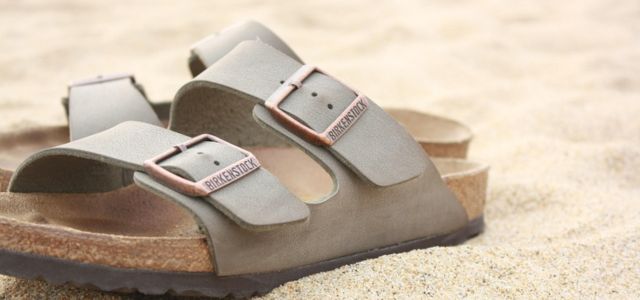Will the German Federal Court of Justice find the substance of Birkenstocks has transubstantiated from functional orthopedics to works of art while their accidents remain unchanged? The iconic sandal manufacturer hopes so. Birkenstock is fighting a new wave of imitators and, therefore, seeking copyright protection for its Bohemian footwear in three recent suits. While the sandals may find some hope in Germany’s lowered creativity threshold, most likely, they are without a place to stand.
The new lawsuits offer German courts an opportunity to reconsider the extent to which functionality precludes IP protections traditionally reserved for artwork and ornamentation. German law, like US copyright law, excludes at least some functional aspects of designs from copyright eligibility. Copyright does not extend even to aesthetic effects that arise solely from the purpose of the design’s use. For industrial ornamentation, design patents (which Germans call “design rights”) are the preferred means of protection. Birkenstock sandals, historically rooted in orthopedics and comfort, seem to offer little in copyrightable, non-functional design.
In Germany and the US, protection for functional designs is reserved for patents. Patents encourage inventors to disclose their technological secrets in hopes that sharing will improve society generally and offer a proliferation of useful knowledge. Hence, patents are relatively short-lived, twenty years in the US and Germany. Copyrights, on the other hand, support authors and artists as they share their expressions with the world. A longer-term is acceptable so long as the copyright does not prevent society’s access to any technical innovations. In Germany and the US, individual copyrights for published works last for the life of the author plus seventy years. Designs based on functionality, then, lie outside the copyright’s intended subject matter.
The US strictly prohibits copyright protections for unoriginal, functional, or utilitarian aspects of a design, with 17 USC 102(b) excluding any “idea, procedure, process, system, method of operation, concept, principle, or discovery.” While not as rigorous as the US, German courts have recognized the same rule by denying copyright protections to technically or functionally defined features. German copyright law protects useful articles but only in their creative, artistic contributions, not in their technical variations.
The Birkenstock case puts the creative/technical distinction to the test. The Birkenstock legacy is a series of innovations seeking to provide more flexible arch support. In the early twentieth century, the company manufactured insoles marketed and sold through podiatrists. Birkenstock originally released its sandal, with its flexible cork footbed, as fitness wear. We can all acknowledge Nike’s attempts to marry technical improvements with original aesthetics, but Birkenstock’s company history suggests that its shoe design did not early aspire to be “creative” or “artistic.” Rather, it focused on physiology and functionality, selling its products at health food stores. Only later did the shoes’ design acquire cultural significance when various groups adopted them as utilitarian antitheses to mainstream fashion. Today, Birkenstocks are both mocked and celebrated as extravagantly practical, ergonomic, and unoriginal, with internet memes reading, “People are paying $135 to look like they attended the Last Supper.”
None of this is to say that Birkenstock sandals can’t have copyrightable elements. Conceivably, fashion elements can embody utilitarian aesthetics, such as cargo pants or jumpsuits. Other utilitarian designs, such as Bauhaus lighting structures, are protected under German law. However, given Birkenstock’s historical affinity for function over fashion, the present cases raise a question of what those copyrightable elements might be. They cannot be anything readily gleaned from the Bible or a Da Vinci painting — Gizehs? There cannot be anything included for the sake of functionality, for example, a cork footbed for flexibility or an open toe for breathability. Once these things are stripped away, what is left for Birkenstock to protect? This is the question before the German appeals court after the trial court found nothing. German IP lawyers, I imagine, will be washing their feet in anticipation of the court’s decision.

Written by Christopher Shrock
Associate, GableGotwals
You may also like…
Clarivate announces the development of IPfolio Law
Clarivate, a leading global provider of transformative intelligence, today announced the development of IPfolio Law,...
The EUIPO launches the Copyright Knowledge Centre for guidance amid rise of generative AI
The Centre aims to help creators and rights holders navigate copyright in today's technological landscape The EUIPO is...
Trademarking the dupe economy: what LULULEMON DUPE signals for the future of enforcement
The dupe culture, particularly in the fashion market, is here to stay. The less expensive versions of luxury garments...
Contact us to write for out Newsletter














